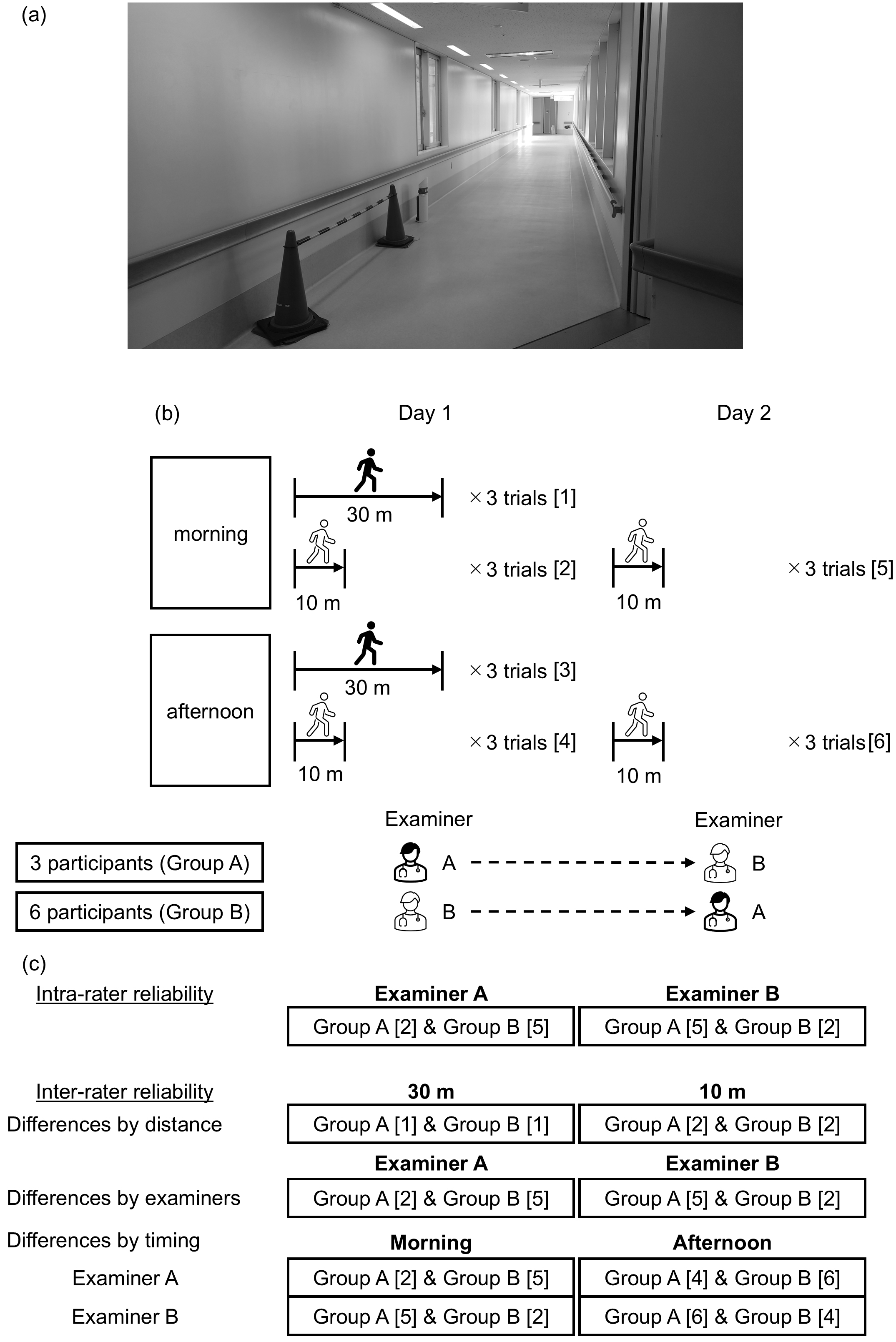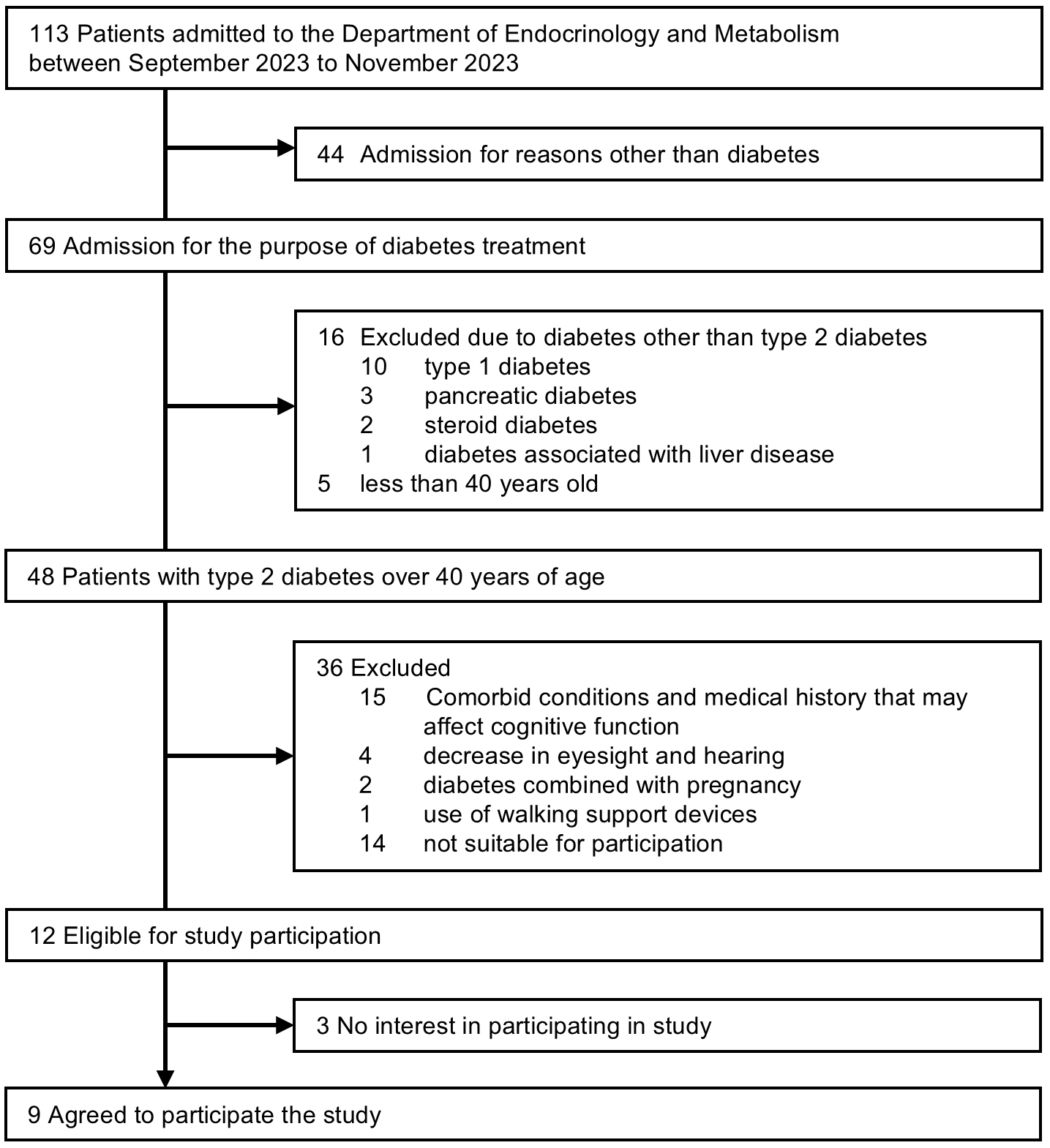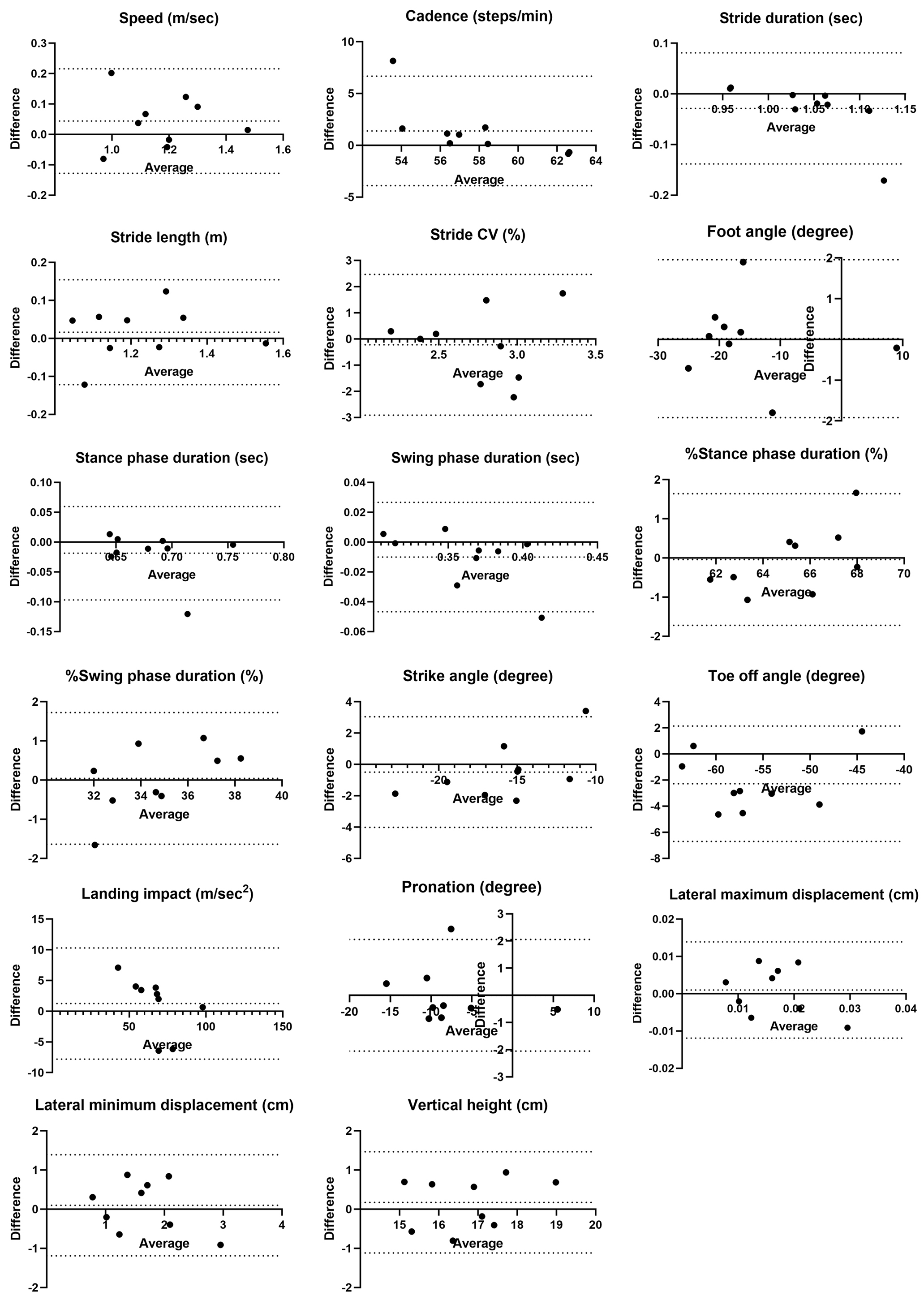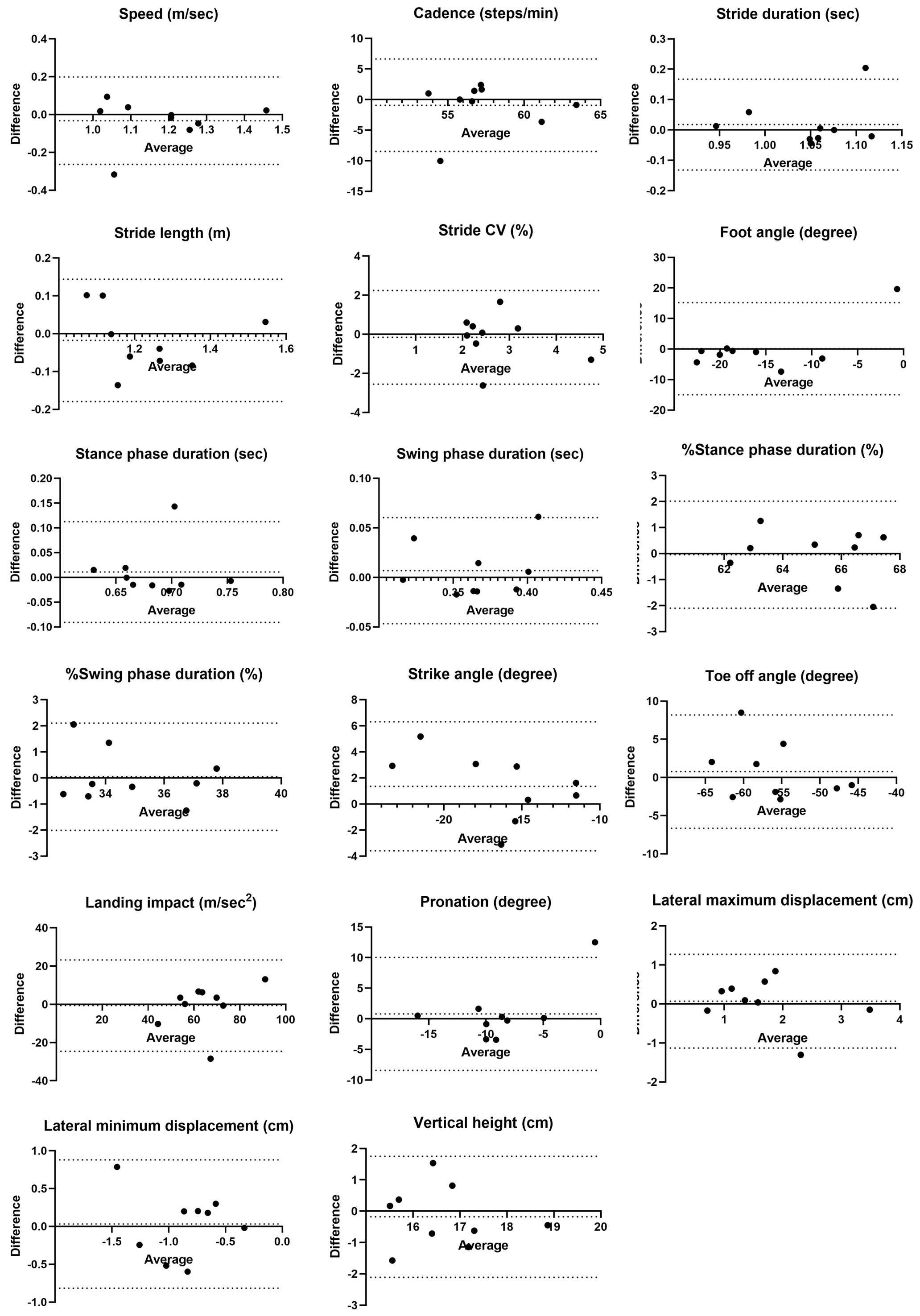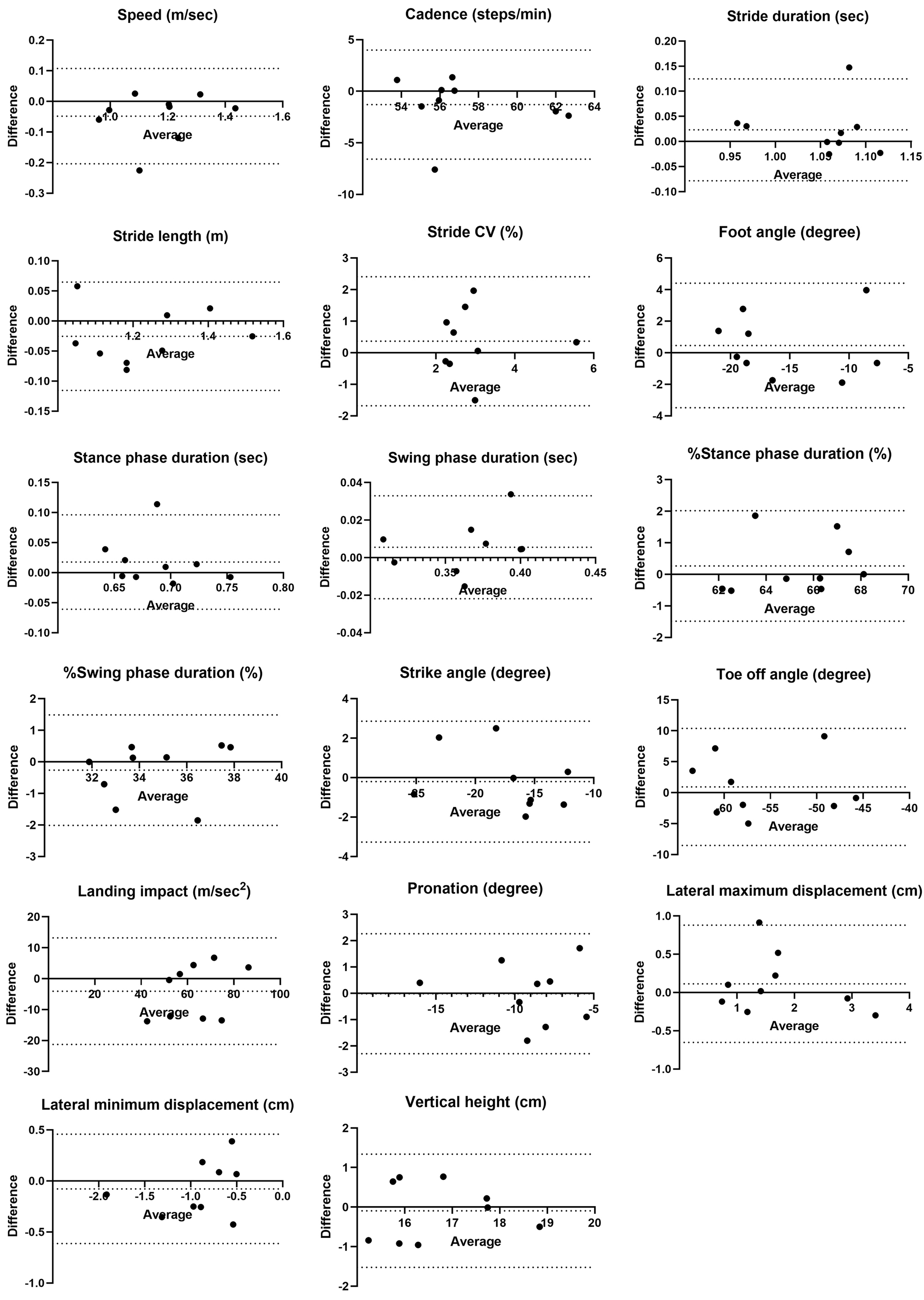Figure 1. Gait analysis settings. The gait analysis was conducted in a long over 30-m-long corridor (a). The participants were tested under different conditions by distance (10 vs. 30 m), examiner (examiner A vs. B) and timing (morning vs. afternoon). Each condition was tested three times. Square brackets indicate trials based on distance and time for each measurement day. On day 1, examiner A measured three participants, while examiner B measured six participants. The participants measured by examiner A on day 1 were defined as group A, and those measured by examiner B were defined as group B (b). The measurement points used to evaluate intra-examiner and inter-examiner reliability based on distance, examiner, and timing are shown in (c). The difference in distance was analyzed using data from examiners A and B collected in the morning of day 1.
From: Reliability of Gait Analysis Using ORPHE ANALYTICS in Patients with Type 2 Diabetes: A Single-center Observational Study
